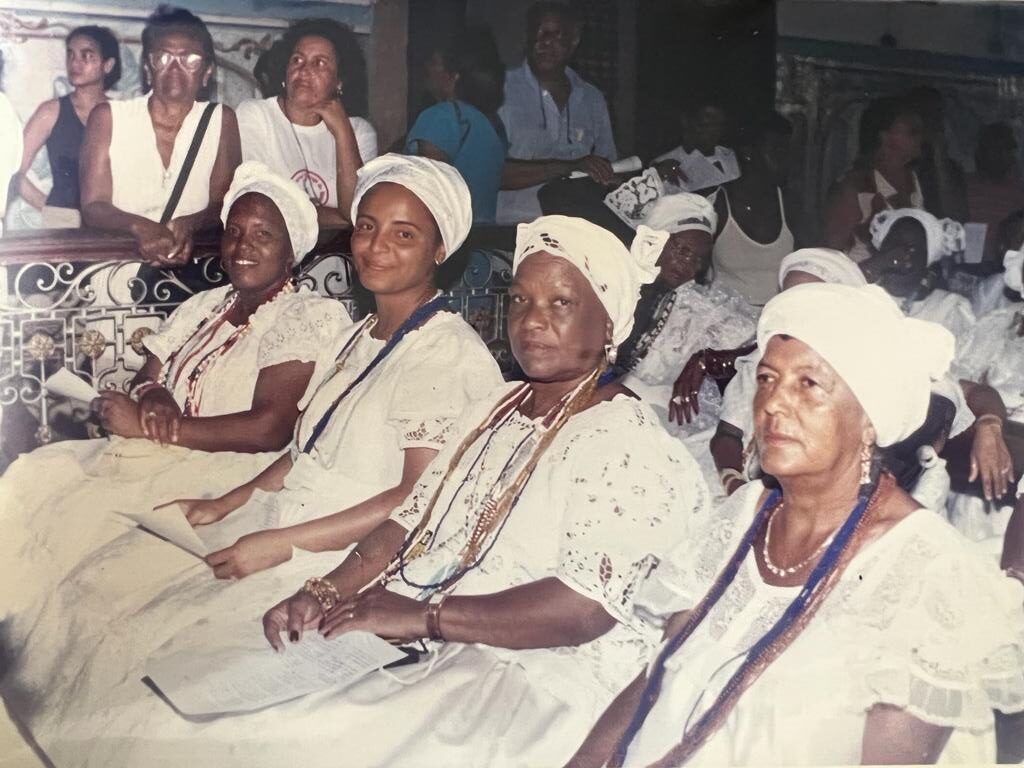Last week I introduced The Lelia Gonzalez Fellowship, a historic ambassadorship program bridging working-class communities in the Black diaspora through travel and cultural exchange. The first cohort of fellows includes a person that we should all know- Rita Conceicao.
Rita, also known as “Rita Cliff,” is most commonly known as the founding director of the Brazilian NGO Bahia Street, a program for young Black women in an under-resourced neighborhood in the city. But that’s only part of Rita’s story.
During the diplomatic voyage to the United States, communities will be able to hear about Rita’s story and her life as a community archivist, documentarian, LGBTQ pioneer, anthropologist and activist in defense of the quality of life and citizenship of Black women worldwide.
Rita’s History
Rita Conceição was born in 1958, in the city of Salvador, the capital of the state of Bahia, Brazil. Bahia is a state located in northeastern Brazil. Its capital Salvador has about three million citizens. Eighty percent of these inhabitants are Black.
Salvador differs from other Brazilian cities due to the fact that it has the largest concentration of Blacks in the world after Lagos, Nigeria – making it the first and largest Black diaspora in the world.
Rita is the daughter of a domestic worker and a security guard, the first of the couple’s eight children. She started to learn to read and write in the neighbor’s house because, at that time in Brazil, there were no public schools and daycare centers that the poor could afford. Her mother paid a small amount for their neighbor to teach Rita to read and write because her dream was to see her daughter in college.
Her mother barely knew how to sign her name but she wanted Rita to go to college and study so that her future wasn’t limited to working as a maid.
Rita’s childhood in the city was harsh. In 1964, the Government of Brazil was taken over by a military coup. The military seized power, quickly repressed freedom of expression, and instituted economic policies that caused a major recession, leaving millions of landless rural workers to starve or flee to urban centers in hopes of survival and a better life in big cities.
This rural migration resulted in the creation of large impoverished and densely populated communities in all Brazilian cities, intensifying the deep inequalities between rich and poor. This inequality can still be witnessed today, making Brazil one of the countries with the greatest economic inequality in the world.
During this time of dictatorship in the ’60s and 70s, thousands of intellectuals, students, activists, rural workers and protesters were arrested, tortured and disappeared. Many survivors were forced to flee abroad as expatriates.
Rita’s educational orientation was greatly influenced by this political environment full of students, intellectuals and activists who fought against the military dictatorship. Her neighbor teacher, Maria, was a student-activist and taught Rita to read which prepared her to attend community meetings to discuss resistance strategies against the military government.
She participated in protest marches, and activist meetings, and sold political newspapers at the doors of theaters, cinemas, and traffic lights to help the movement. All the while, she was helping her parents raise her younger siblings.

When she finished high school, she took her first college entrance exam for communication. She failed. Repeated, and failed again. But she never gave up. Finally, in January 1981, she took another entrance exam at, the federal university and was approved in the Social Sciences course.
In 1984, Rita’s beloved mother passed away. His brothers were still very young: the youngest was five years old. Without support and structure to continue the University, she went to live on campus and work to help her father take care of her brothers. It took Rita many years to finish her undergraduate degree because of her family obligations. It took her 12 years, but in 1992, Rita finally received her diploma in the social sciences course, specializing in Anthropology.
It was during this period that she took up the art of photography. A photojournalist at heart, Rita began to photograph the marches and political movements in Salvador. Her first exhibition took place at the Rosário dos Pretos (Rosary of the Black People) Church. This church was a special place for Black history. because it was built by the Irmandade do Rosário dos Pretos (Black Catholic Sisterhood)during the period of slavery.

Rita befriended the popular union leader, Lula da Silva, who was on his way to becoming President of Brazil. Rita photographed Lula for several years until he won the elections and became the first Workers’ Party Leader to become President.
As a scholar-activist, Rita was focused on the unequal conditions of the Black population of Salvador, and the difficulties of obtaining a quality education- especially for Black women, who as children are frequently forced to drop out of school and work, to help the family. To address this inequality, Rita Conceição created the NGO Bahia Street in 1996, with the aim of helping poor girls to have access to quality schooling for a more dignified life in the future.
Over the past 26 years, like many community organizations, Rita struggled to grow and keep the center open and help more young girls. For a while, she worked as the mayor’s official photographer but was fired unjustly for wearing locs. She sued the city and won the case resulting in a settlement that she used to help her family and renovate the community center.
Bahia Streets community center is a major reference for women in Brazil. It serves
girls and adolescents from different neighborhoods (favelas) in the city, employs people from the community and offers girls a quality education. Rita provides courses on health, sexuality, anti-domestic violence, nutrition, language, dance, computers, and literacy. This work gained worldwide attention, in 2008 when she received the World Children’s Award and in 2009 the IVY Humanitarian of the Americas in Washington DC.
Throughout the years, Rita continued her photography work. Primarily documenting Baptisms that took place at the Rosário do Pretos church and the local reality of Black families in the lower-class neighborhoods.
When Rita and I met in 2016, we collaborated on fundraising for the community center. It was months later before she shared with me her incredible collection of images.
The collection spans 30 years and much of the content is still in undeveloped negatives.
The themes of the collection are equally expansive. The archive contains thousands of images of common Black Brazilian life that make it easy to see the relationship between Black communities in the diaspora. In 2019, Rita and I partnered together to create the Rita Cliff Archives. The Atlantic Archives will repair, organize and promote her collection.
The Rita Cliff collection will be on display during the upcoming fellowship tour.
With local institutional partners, we will host a series of exhibits and lectures, where the public can witness the story of Black Brazil and hear directions from the renaissance woman who documented it all.
If you are interested in knowing more about the Lelia Gonzalez Fellowship, our upcoming community engagement workshops or other sponsorships, contact me directly @ smiles4@tulane.edu.








